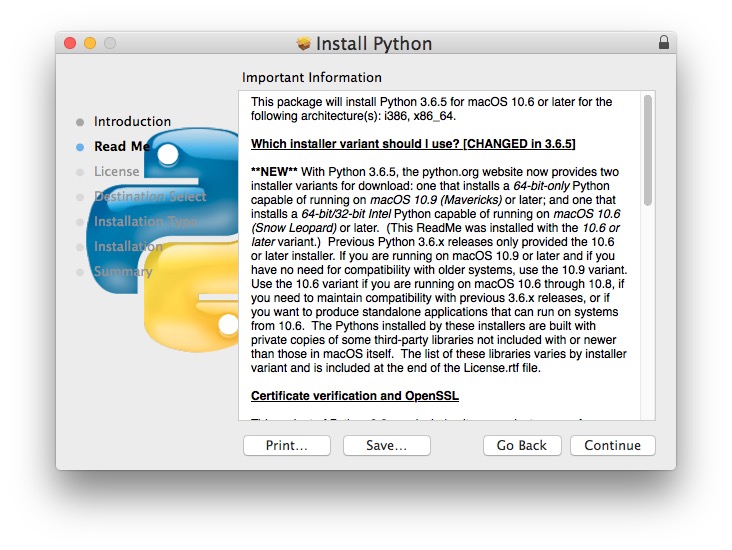- Install Python 3 Mac Virtualenv
- Install Python 3 Mac Pycharm
- Install Python 3 For Mac Os
- Install Python 3 Mac Pyenv
The official home of the Python Programming Language. While Javascript is not essential for this website, your interaction with the content will be limited. Installing Python 3 on Mac OS X. These instructions document the installation of Python 3. The version of Python that ships with OS X is great for learning, but it's not good for development. The version shipped with OS X may be out of date from the official current Python release. Installing Miniconda Mac. Follow the below instructions to install the latest Miniconda version for Mac. Go to the Miniconda Download page and download the Python 3.7 Mac OS X 64-bit.pkg installer. After the download is complete, run the installer and click through the setup steps leaving all the pre-selected installation defaults.
Prerequisites for installing Python3 on Mac
Install Xcode
Xcode is Apple's Integrated Development Environment (IDE). You might already have Xcode on your Mac. If not, you can get Xcode from Apple appstore.
Install Brew
Homebrew installs the stuff you need. Homebrew is a package manager for Mac OS
Step 1. Launch Terminal.
Go to Launchpad – Other – Terminal


Step 2. Install HomeBrew
Install Python3 with Brew
Enter brew command into terminal



Step 2. Install HomeBrew
Install Python3 with Brew
Enter brew command into terminal
brew install python3
Install Python 3 Mac Virtualenv
Optional, PATH environment
Set up PATH environment variable, if you used HomeBrew to install Python3, then HomeBrew already added PATH.
Do not change PATH environment if you can launch python3 from terminal.
Install Python 3 Mac Pycharm
Add the following line to your ~/.profile file
Install Python 3 For Mac Os
export PATH=/usr/local/bin:/usr/local/sbin:$PATH
Usually your Python installation directory looks like this, add it to your PATH
Wifi usb for mac. PATH='/Library/Frameworks/Python.framework/Versions/3.6/bin:${PATH}'
Install Python 3 Mac Pyenv
There are quite a few analogies between Python and the Unix philosophy. Two of its principles are transparency and easy reading of its code. Thanks to this, learning the language is very accessible thanks to its easy use and legibility.
The library modules included on Python include several tools and data structures familiar to any developer: variables, lists, sets, functions, classes, and loops, all thoroughly documented on both its official website and various communities on the web.
Python is an easy-to-use language with a gently sloping learning curve. It uses an elegant syntax that allows for easy reading of the source code. Besides all that, it's multiplatform and easy to integrate with other languages and development environments.
